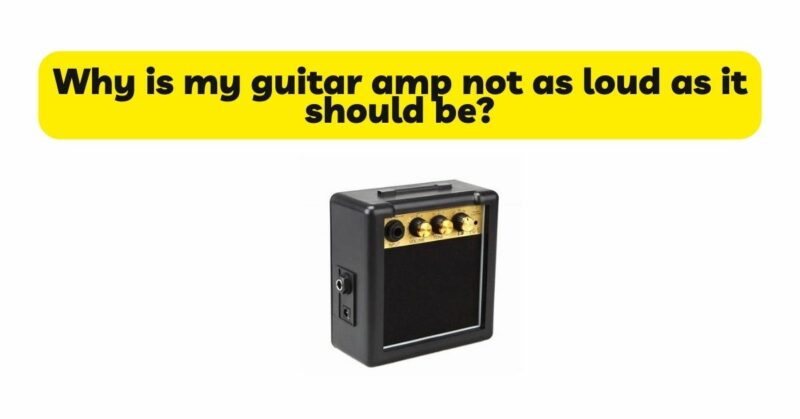A guitar amp is an essential component of any electric guitar setup, providing the necessary amplification to achieve the desired volume and tone. However, there are instances when guitarists find that their amp is not performing as loudly as expected. This can be frustrating and impact the overall sound quality. In this article, we will explore several common reasons why a guitar amp may not be as loud as it should be and discuss possible solutions to rectify the issue.
- Speaker Efficiency: One of the primary factors affecting the overall volume of a guitar amp is the efficiency of its speaker. The efficiency, measured in decibels (dB), refers to how effectively the speaker converts electrical power into sound. If the speaker has a low efficiency rating, it will require more power to produce the same volume as a higher efficiency speaker. Therefore, if your amp’s speaker is not efficient, it may result in reduced volume output. Consider upgrading to a more efficient speaker to improve the overall loudness of your amp.
- Tube/Valve Issues: Tube or valve amplifiers are popular among guitarists due to their warm tone and organic distortion characteristics. However, these amplifiers can experience issues that affect their overall volume. Tubes or valves can become worn out, causing a decrease in amplification and resulting in a quieter sound. Replacing the tubes or valves with new ones can often restore the amp’s volume and improve its overall performance. Additionally, it is important to ensure that the tubes are properly biased, as incorrect biasing can also lead to reduced volume output.
- Faulty Components: Guitar amps consist of various electronic components, including capacitors, resistors, and transistors, which can degrade over time. If any of these components become faulty, they can negatively impact the amp’s performance, resulting in reduced volume output. In such cases, it is advisable to take the amp to a qualified technician who can diagnose and repair any faulty components. Regular maintenance and periodic inspections can also help prevent component failures and ensure optimal performance.
- Incorrect Input/Output Connections: Sometimes, the issue with the amp’s volume may be due to incorrect input or output connections. Ensure that your guitar cable is securely plugged into the input jack of the amp. Loose or faulty connections can lead to signal loss and a decrease in volume. Similarly, verify that the amp’s speaker cable is properly connected to both the amp and the speaker cabinet. A loose or damaged speaker cable can cause a significant drop in volume.
- Master Volume and Gain Settings: Every guitar amp has controls such as master volume and gain that allow you to adjust the overall volume and the amount of distortion, respectively. If these settings are not properly adjusted, it can result in a perceived decrease in volume. Experiment with different settings and ensure that the master volume is turned up sufficiently to achieve the desired loudness. Similarly, adjusting the gain control can help increase the amp’s overall volume, especially when aiming for overdriven or distorted tones.
- Room Acoustics: Another factor to consider is the environment in which you are playing your guitar amp. Room acoustics can greatly affect the perceived volume and overall sound quality. A small, poorly treated room can lead to sound reflections and standing waves that may result in a loss of volume. Consider adjusting the amp’s position, using room treatment materials, or even relocating to a different room to achieve better sound projection and maximize the amp’s loudness.
Conclusion: A guitar amp that falls short of its expected volume can be frustrating, but understanding the possible reasons behind the issue can help you rectify it effectively. Whether it’s a speaker efficiency problem, tube/valve issues, faulty components, incorrect connections, suboptimal settings, or room acoustics, there are solutions available to restore your amp’s volume. By troubleshooting and addressing these potential causes, you can ensure that your guitar amp delivers the volume and tone you desire, allowing you to fully enjoy your musical experience.


